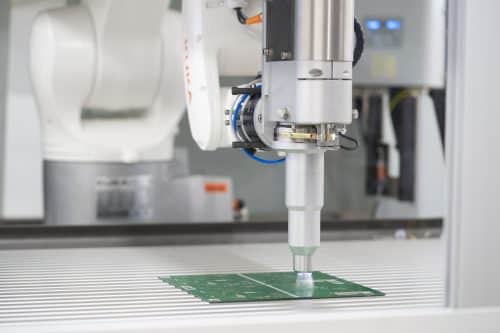“Safe and long-lasting components are important in the field of electronics and will only become more so in the future,” says Anne-Laureen Lauven, Head of Marketing at Plasmatreat. “With our plasma technology, we can make a key contribution to high-performance and durable products. We are looking forward to presenting the various applications of our Openair-Plasma technology to a broad audience in Munich. In our day-to-day routines, we are increasingly entrusting our lives to electronics, so we want to show the electronics sector how it can achieve even higher component quality with optimized surfaces.” Lauven describes the forthcoming trade fair presentation as follows: “At productronica, we will showcase different systems to introduce both the Openair-Plasma for surface treatment as well as our PlasmaPlus technology to apply nano coatings. In one cell, we will show surface treatment for semiconductor parts with a sophisticated dual-lane concept for increased throughput. In the other cell, we will demonstrate the activation, cleaning and coating of various components on four different movers that position the pieces under the appropriate jet with the innovative kinematic parts-handling system XPlanar from Beckhoff.”

Plasmatreat technology serves a broad range of applications in electronics manufacturing, from component production to module assembly and the subsequent construction of electronic devices. It puts a special focus on complying with safety standards and reducing VOC emissions in component treatment, as well as on reducing rejects to almost zero and minimizing environmental impacts. “A number of specific factors are making the use of Openair-Plasma more and more relevant: new safety standards, such as in automotive manufacturing; environmental regulations and guidelines, such as those encouraging the avoidance of solvents; and very recent issues like parts shortages,” says Lauven.
The current shortage of parts, especially, is leading to a focus on cycle-time-optimized manufacturing processes in semiconductor production. From this perspective, speed in the manufacture of semiconductor components is just as important as precision in production and the quality of the product. Plasmatreat has responded to the increased challenges and developed a fully automated inline system for selective pretreatment with Openair-Plasma that is designed according to market requirements. In addition, the company continues to refine its quality standards and is using its PCU (Plasma Control Unit) and associated quality assurance modules to keep an eye on critical and important parameters in all aspects of plasma treatment. “In the age of Industry 4.0, process safety and reproducibility requirements are constantly increasing. With Plasmatreat, our customers benefit from a flexible adaptable, potential-free, cycle-time-optimized and reproducible high-speed treatment that can be seamlessly integrated into an existing manufacturing line,” says Nico Coenen, Market Segment Manager Electronics at Plasmatreat.
Another specific field in which Openair-Plasma plays an important role is LED manufacturing. The use of a nano coating in the LED manufacturing process makes it possible to use material substitutes and eliminate process steps. In addition, PlasmaPlus can be used successfully in the wire-bonding process in LED manufacturing. That process often results in contaminated wire-bonding surfaces when the chip adhesive cures, because the adhesive bleeds at high temperatures, which has a negative impact on the surface quality of the bond. An “anti-bleeding” nano-coating created in the PlasmaPlus process can prevent the adhesive from bleeding and simultaneously increase the reliability of the wire bond contact.
The increasing miniaturization and therefore compactness of electronic components is also driving greater use of Openair-Plasma in assembly production, especially when these printed circuit board assemblies are being used in increasingly demanding environments. In these conditions, the assemblies must operate absolutely flawlessly and reliably. “That means it is becoming more and more important to protect electronics from environmental influences,” says Coenen. For electronics and sensor components in automotive engineering, for example, the corrosion-resistant coating AntiCorr is applied selectively as a nano coating to adhesive and sealant grooves of metal components. This serves as reliable, long-term protection against the incursion of moisture and resulting corrosion.
Another field of application is final assembly, such as when parts are bonded with adhesive. This could involve connecting housings with electronics or fixing touchscreens into position in a device. Here as well, the plasma treatment makes it possible to create a bond between materials that would otherwise be difficult to connect. “In these cases, the use of Openair-Plasma helps to clean and activate the surfaces, allowing extremely durable and rugged bonds between the materials,” says Coenen.
Openair-Plasma technology is used in automated and continuous manufacturing processes in almost every industrial sector. Examples include the automotive, electronics, transportation, packaging, consumer goods, textile, medical engineering and renewable energy sectors. All of these fields benefit from the technological, cost and environmental advantages of the plasma technology.






